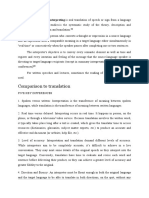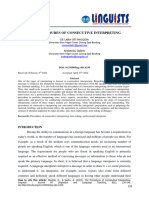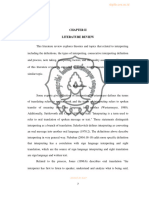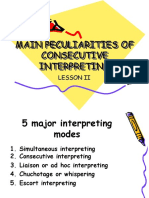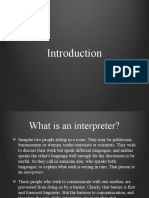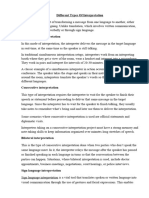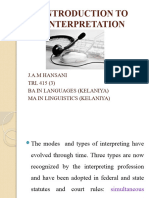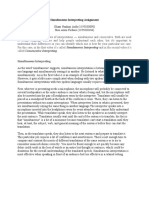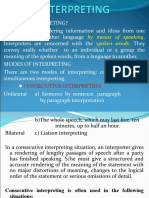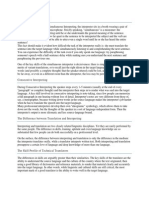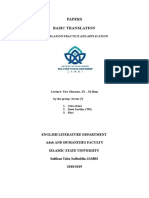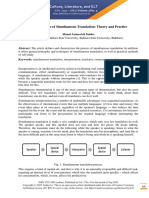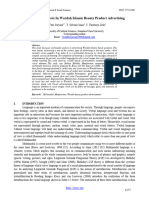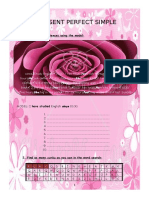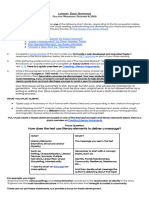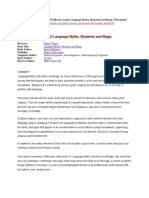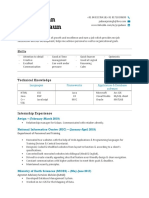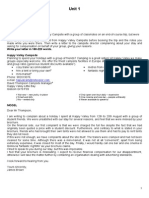0% found this document useful (0 votes)
12 views12 pagesInterpreting - Portrait
1. Interpreting involves orally translating speech between languages in real-time, while translation refers to converting written text.
2. Consecutive interpreting involves an interpreter listening to a speaker, taking notes, and then interpreting the full message after the speaker pauses.
3. It is commonly used in situations with few participants like discussions, interviews, and press conferences to overcome language barriers.
Uploaded by
Sugate AustronCopyright
© © All Rights Reserved
We take content rights seriously. If you suspect this is your content, claim it here.
Available Formats
Download as DOC, PDF, TXT or read online on Scribd
0% found this document useful (0 votes)
12 views12 pagesInterpreting - Portrait
1. Interpreting involves orally translating speech between languages in real-time, while translation refers to converting written text.
2. Consecutive interpreting involves an interpreter listening to a speaker, taking notes, and then interpreting the full message after the speaker pauses.
3. It is commonly used in situations with few participants like discussions, interviews, and press conferences to overcome language barriers.
Uploaded by
Sugate AustronCopyright
© © All Rights Reserved
We take content rights seriously. If you suspect this is your content, claim it here.
Available Formats
Download as DOC, PDF, TXT or read online on Scribd
/ 12



